
|
xTuple ERP Reference Guide |
To create a new task, select the button. The following screen will appear:

When creating a new task, you are presented with the following options:
Enter a code to identify the task.
Specify one of the following statuses to characterize the task:
Use this status to indicate the task has not yet begun.
Use this status to indicate the task is in-process.
Use this status to indicate the task is complete.
Enter a brief name to identify the task.
Enter a description to identify the task.
Select task owner.
Select who the task was assigned to.
Date task is due.
Date task was assigned.
Date task actually started.
Date task was actually completed.
To view a time and expenses summary of the project, select the tab. The following screen will appear:
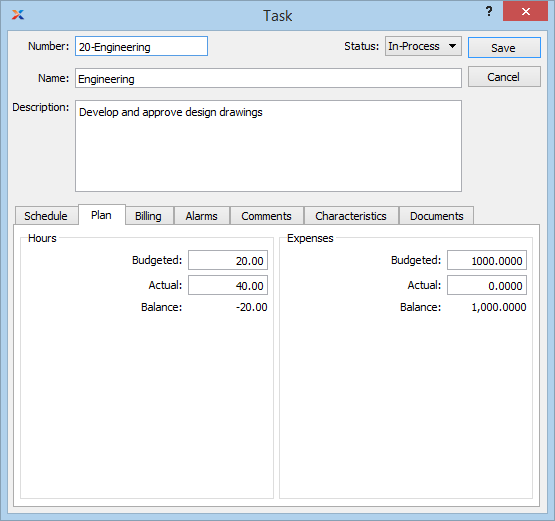
When viewing the time and expenses summary for a project, you are presented with the following options:
Specify the number of hours associated with the task using the following fields:
Enter the number of hours budgeted for the task. This information may be saved and updated later.
Enter the actual number of hours consumed performing the task. This information may be saved and updated later.
Displays the difference between the budgeted and actual hours.
Specify the expenses associated with the task using the following fields:
Enter the total expenses budgeted for the task. This information may be saved and updated later.
Enter the actual expenses incurred while performing the task. This information may be saved and updated later.
Displays the difference between the budgeted and actual expenses.
With the time and expense package installed, you can specify customer and billing rate information by individual tasks. To specify the customer and billing rate information by task, select the tab. The following screen will appear:
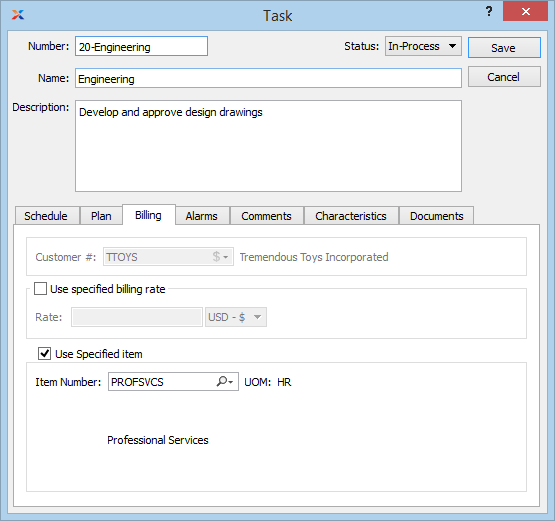
When specifying customer and billing rate information by task, you are presented with the following options:
Enter the customer you want to associate with the task.
Select if you want to specify a customer billing rate for the task. If not selected, the rate may be entered manually on time sheets.
Specify the customer billing rate for the task.
To add an alarm related to a task, select the tab. The following screen will appear:
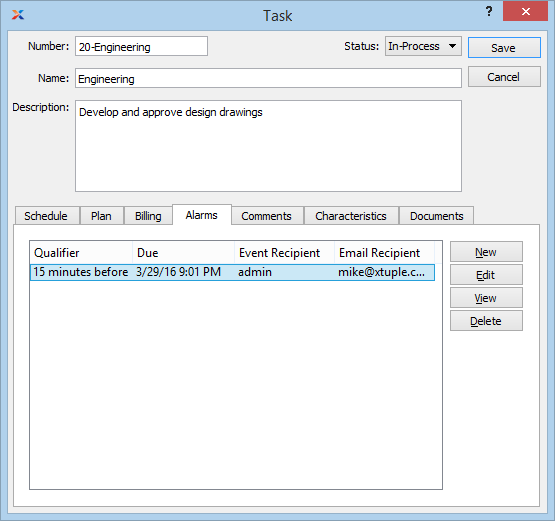
To create a new alarm, select the button. The following screen will appear:

When creating a new alarm you are presented with the following options:
Add the date and time when you want the alarm to alert specific users and contacts.
Select if you would like an event to trigger the alarm. You may select from an unlimited list of users to be notified.
Select if you would like an email notification to be sent as an alarm. You may select from an unlimited list of users to be notified.
Select if you would like a system message to be issued as an alarm. You may select from an unlimited list of users to be notified.
The following buttons are available:
Allows you to choose unlimited number of users created in the system.
Allows you to choose from unlimited number of contacts created in the system.
Creates the alarm and adds it to the list of alarms.
Closes the screen without creating an alarm, returning you to the previous screen.
To add comments to a task, select the tab. The following screen will appear:
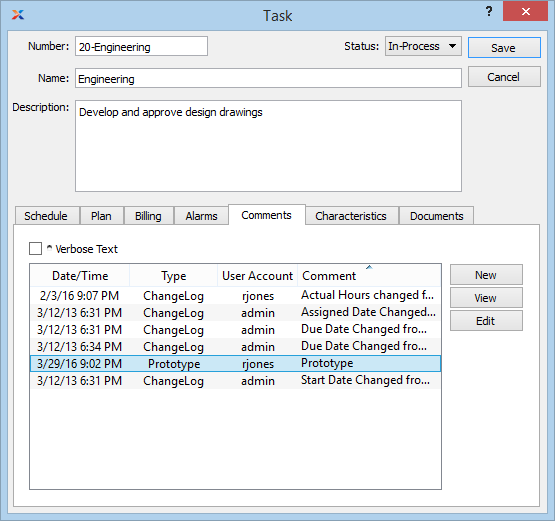
When adding or reviewing comments, you are presented with the following options:
Select to display all comments in the list in an expanded view which includes the entire text of each comment. To edit a comment, simply select the link next to the comment. That link will not be shown for changelog comments, which can't be edited. If the Verbose Text option is not selected, the comment list will display only header level information for each comment.
Display lists comments related to the record.
The following buttons are available:
Opens screen for creating a new comment.
Highlight a comment and then select this button to reach a read-only view of the Edit screen.
Enables you to edit highlighted comments—as long as the comments are not changelog comments. ChangeLog comments are system-generated and may not be edited. The Edit screen is the same as that for creating a new comment—except that when editing, the fields will contain comment information. Double-clicking on a comment will also bring you to the editing screen.
To enter a new comment, select the button. The following screen will appear:

Select a comment type from the drop-down list to classify the comment. This is a required step. Comment types may be system-defined (i.e., changelog and general) or user-defined, as described in Section 13.2.3, “Comment Types”. Once you have specified a comment type, begin typing your comment in the main text area. The text area features word-wrapping and scroll-bar support for longer comments.
The following buttons are unique to this screen:
Select to show the complete list (i.e., thread) of comments associated with the record. To hide the list, simply select the button again. The comment thread will show the most recent comment first.
To add characteristics to a task, select the tab. The following screen will appear:
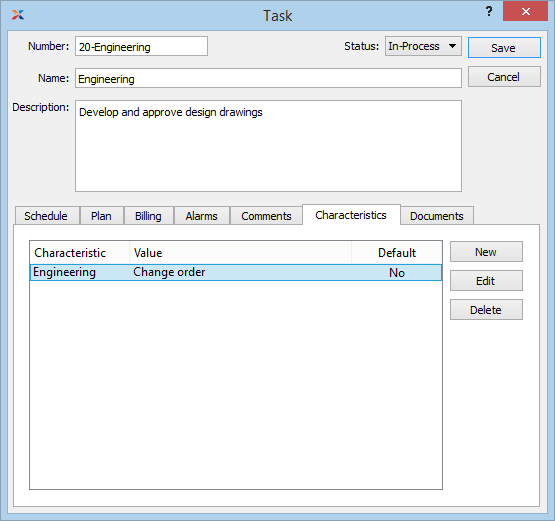
To create a new characteristic for your current context, select the button from the characteristics list. The following screen will appear:
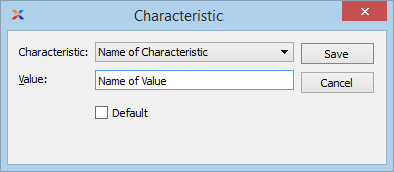
When creating a new characteristic, you are presented with the following options:
Select a characteristic from the list of characteristics available for your current context. To learn more about how characteristics are linked to specific contexts, please see Section 9.2.2.1, “Characteristic”.
Enter a value to associate with the characteristic.
In some contexts, the Default option will appear. Select if the value entered is the default value for the specified characteristic. Default values will always be listed first where characteristics are used.
To add documents to a task, select the tab. The following screen will appear:
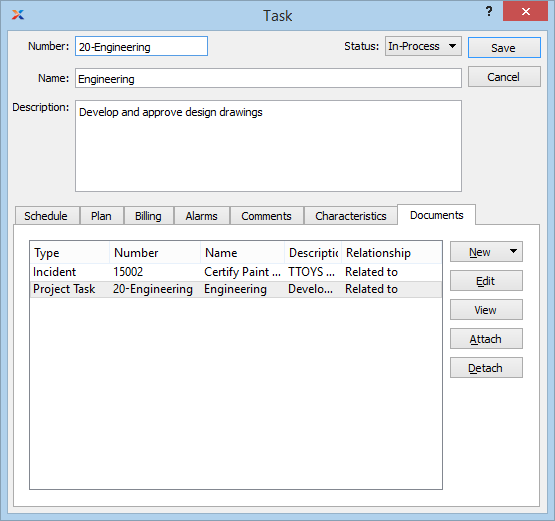
When associating documents, you are presented with the following options:
Select to create a new document and associate it with the current record. You may create the following document types:
Select to create a new image association.
Select to create a new fixed asset association.
Select to create a new maintenance order association.
Select to create a new incident and associate it.
Select to create a new project and associate it.
Select to create a new opportunity and associate it.
Select to create a new to-do and associate it.
Enables you to edit associated documents. The Edit screen is the same as that for creating a new document—except that when editing, the fields will contain document information. Double-clicking on a document will also bring you to the editing screen.
Highlight a document and then select this button to reach a read-only view of the Edit screen.
Select to associate already-existing documents. The following document types may be attached: contact, account, customer, employee, file, image, incident, item, opportunity, project, purchase order, sales order, vendor, web site, work order.
Highlight a document and then select this button to remove the association.
To associate already-existing documents, select the button. The following screen will appear:
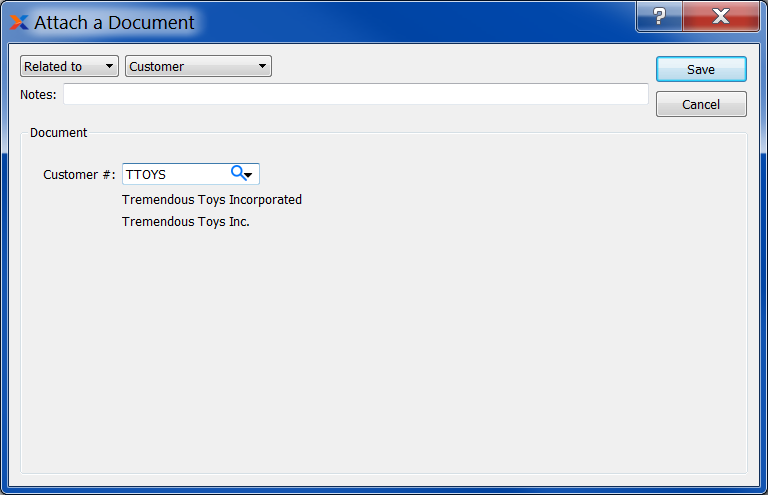
When associating already-existing documents, you are presented with the following options:
Indicate how the document is related to the current record. The following relationship options are available: related to, parent of, child of, duplicate of.
Specify the kind of document you want to associate. The following document types may be attached: contact, account, customer, employee, file, image, incident, item, opportunity, project, purchase order, sales order, vendor, web site, work order. When associating files, you will also be given the option to save the file to the database.
There is no file size restriction when saving files to the database. However, excessively large files could cause storage and performance issues.
Leave any notes on the document file as needed.
Use the lookup tool to identify the specific document you want to attach. The data entry options will vary depending on the document type you select.